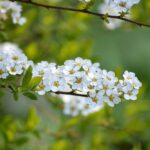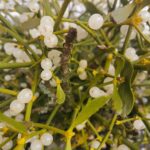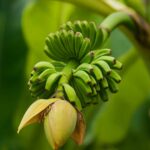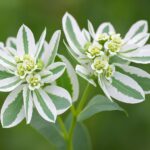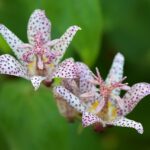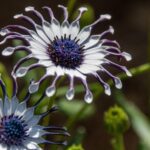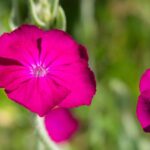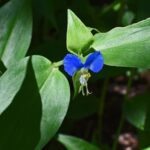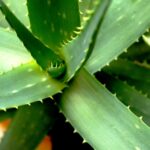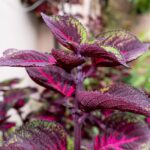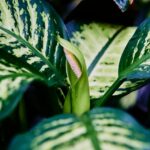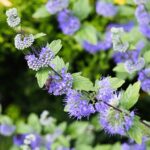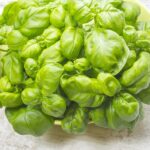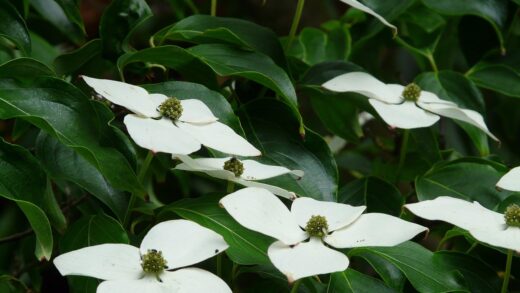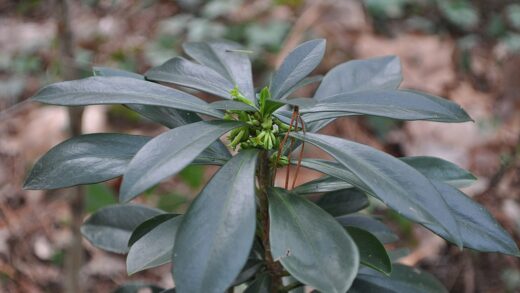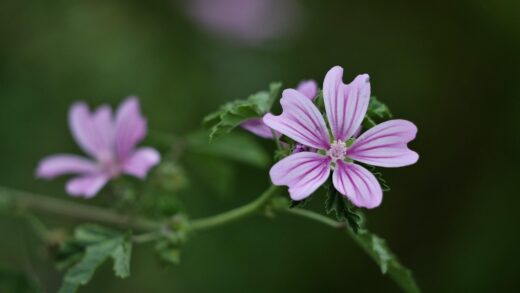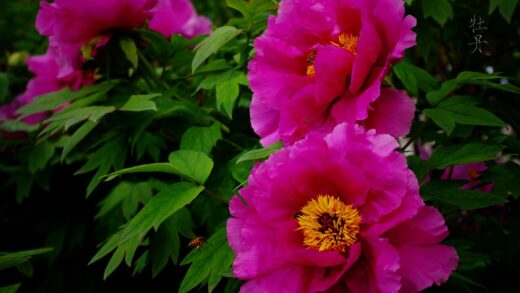Lemon balm, or Melissa officinalis in scientific terms, is a very popular and versatile medicinal and culinary herb, made so popular in gardens and kitchens alike by its fresh, lemony scent and aroma. Although it is fundamentally a relatively resilient and undemanding plant that requires little care, the diligent gardener must be aware of the potential diseases and pests that can attack it. Prevention and early detection are key to maintaining the health of the plant stock, as a weakened lemon balm is not only less aesthetically pleasing, but the quantity and quality of its valuable essential oils can also be diminished. The application of appropriate cultivation technology and biological plant protection tools is essential to achieve a chemical-free, healthy crop.
Fungal diseases and their prevention
During the cultivation of lemon balm, fungal infections are one of the most common problems, appearing primarily in damp, humid weather conditions or as a result of improper cultivation practices. These pathogens can damage the plant’s leaves, stem, and root system, thereby reducing its growth vigor and the quality of the harvestable herb. Fungal diseases spread through spores, which can be transmitted from one plant to another by wind, water splash, or even garden tools. The basis of optimal protection is therefore prevention, which includes ensuring the right environmental conditions and continuously monitoring the plant stock to detect the early signs of infection.
One of the most characteristic fungal diseases is powdery mildew, caused by fungi belonging to the Erysiphe genus. The symptom of the infection is a white, powdery coating on the leaves and stems, which appears to be wipeable but is actually composed of the fungal colonies. This coating inhibits photosynthesis, causing the leaves to turn yellow, become distorted, and then dry out, and in severe cases, the entire plant’s development is stunted. Powdery mildew spreads particularly quickly after warm, humid nights and dry days, as well as in overly dense, poorly ventilated plant stocks. The infection can also alter the plant’s aroma, reducing its culinary and medicinal value.
Another significant fungal pathogen that damages lemon balm is Septoria leaf spot, caused by the fungus Septoria melissae. The initial symptoms of the disease are small, dark, angular spots on the leaves, the centers of which eventually turn grayish, and the fungal reproductive structures, the pycnidia, become visible as tiny black dots within them. As the spots grow, large areas of the leaves can die, turn yellow, and then fall prematurely, causing significant foliage loss and a reduction in yield. The spread of Septoria leaf spot is favored by wet, rainy weather, as the spores are transferred from one leaf to another with the help of water.
The most effective way to control fungal diseases is an integrated approach based on prevention. A fundamental element of this is ensuring proper plant spacing, which allows the foliage to dry quickly and provides good air circulation among the plants. Overhead watering should be avoided; instead, use flood or drip irrigation so that the leaves remain wet for as little time as possible. It is also important to immediately remove and destroy infected plant parts and to clear away autumn leaves to prevent pathogens from overwintering in the soil. In case of a severe infection, sulfur- or copper-based preparations permitted in organic farming may be used, but preventive cultural practices should always take precedence.
More articles on this topic
Bacterial and viral infections
Although fungal diseases are more common in lemon balm, bacterial and viral infections can also cause serious damage, and controlling them is often much more difficult. These pathogens can spread systemically within the plant, meaning they can reach the entire organism through the sap, and are often incurable. Bacteria enter the plant’s tissues through tiny wounds or natural openings, while viruses are most often spread by insect vectors, such as aphids. Prevention is key here as well, with particular emphasis on hygiene and pest control.
Bacterial leaf spot affecting lemon balm is most commonly caused by bacteria from the Pseudomonas genus. The symptoms are characteristic: water-soaked, seemingly translucent spots appear on the leaves, which later turn brown or black and are often surrounded by a yellow halo. In severe cases, the spots can merge, leading to the death of the leaves. The spread of the bacteria is favored by wet, cool weather, and the source of infection can be contaminated seeds, plant debris, or even polluted irrigation water. To curb the disease, it is essential to remove infected plant parts and ensure air movement between the plants.
Viral diseases are relatively rare in lemon balm, but when they appear, they pose a serious problem as there is no effective chemical treatment against them. One possible pathogen is the Cucumber Mosaic Virus (CMV), which is polyphagous, meaning it can infect many plant species. The symptoms can be varied: mosaic-like, yellowish-green spots, deformation, and curling can be observed on the leaves, and the plant’s growth becomes stunted. Viruses are usually transmitted from one plant to another by piercing-sucking insects, such as aphids.
The strategy for controlling bacterial and viral infections is based almost entirely on prevention. The most important step is consistent control of pest insect vectors, especially aphids, as they spread viruses. It is important to regularly disinfect garden tools (pruning shears, hoes), for example, with alcohol or a bleach solution, to avoid transferring pathogens between plants. If a viral infection is suspected, the diseased plant must be immediately removed from the stock and destroyed to prevent further spread. The use of crop rotation and weed control also reduces the pressure of infection, as many weeds can act as host plants for pathogens.
More articles on this topic
The most common animal pests of lemon balm
The aromatic essential oils of lemon balm have a repellent effect on many insects to a certain extent, but this does not mean it is completely protected from attacks by animal pests. Some pests are specialized or have a generalist diet, and lemon balm is no exception on their list of food sources. The damage they cause can be direct, such as chewing leaves or sucking sap, and indirect, such as producing honeydew or transmitting viruses. Regular plant inspection is essential to detect the appearance of pests in time and to begin control measures in the initial stage.
Aphids (Aphididae) are among the most common and stubborn pests of lemon balm. These small, soft-bodied insects colonize the plant’s young shoots and the undersides of leaves, where they suck the plant’s sap with their piercing-sucking mouthparts. As a result, the leaves turn yellow and distorted, and shoot growth stops. In addition to the damage from feeding, they also cause significant indirect harm with the sticky honeydew they secrete, on which black sooty mold grows, inhibiting photosynthesis. Furthermore, as mentioned earlier, aphids are the main vectors of viruses, so their presence poses a dual threat to the plant stock.
Spider mites (Tetranychidae), especially the two-spotted spider mite, can cause serious problems mainly in warm, dry, sheltered locations. These arachnids are barely visible to the naked eye; their presence is most indicated by the fine, dense webbing they weave and the tiny, yellowish feeding marks, known as stippling, that appear on the leaves. Spider mites also suck plant sap, which causes the leaves to lose their color, turn brown, and then fall off; in severe infestations, the entire plant can die. Dry air favors their proliferation, so occasionally spraying the leaves with water can also help in prevention.
Occasionally, other pests may also appear in lemon balm stands, such as leafhoppers (Cicadellidae) or the caterpillars of various butterfly species. Leafhoppers also cause damage by sucking sap, leaving characteristic small, white dots on the leaves, and they can also transmit diseases. Caterpillars, on the other hand, cause damage by chewing, creating holes and notches in the leaves, thereby reducing the plant’s assimilation surface and the aesthetic value of the crop. In all cases, the basis of control is the early detection of the pest and the selection of the appropriate, preferably environmentally friendly, control method.
Integrated pest management and biological solutions
Integrated Pest Management (IPM) is a complex, ecology-based approach that prioritizes preventive, biological, and agrotechnical methods in the fight against pests and diseases, resorting to chemical agents only as a last resort. The goal is not the complete eradication of pests, but to keep their population at a level that no longer causes economic damage, while minimizing the burden on the environment and human health. This approach is particularly important in the cultivation of medicinal herbs like lemon balm, where being chemical-free is a fundamental quality requirement.
The foundation of the IPM system consists of cultural and mechanical control methods. These include selecting the right variety and growing site, using crop rotation to interrupt the life cycles of pathogens and pests, and ensuring balanced nutrient supply, as over-fertilized plants with loose tissue are more susceptible to diseases. Mechanical methods include manually removing infected plant parts or pests, regular weeding, and placing yellow or blue sticky traps to reduce flying pest populations and monitor them. All these procedures serve to prevent the problem from developing in the first place.
Biological pest control involves the use of pests’ natural enemies, such as predatory and parasitic organisms. Ladybugs and their larvae, lacewing larvae, and parasitic wasps that lay their eggs in aphids are extremely effective against aphids. Against spider mites, predatory mites (Phytoseiulus persimilis) can be deployed, which effectively regulate their population. These beneficial organisms can be attracted to the garden by planting flowering, nectar-producing plants, or they can be purchased from specialized suppliers and released into the plant stock in a targeted manner.
If preventive, agrotechnical, and biological methods prove insufficient, biopesticides and organic preparations can be used as a final step. Plant oil-based (e.g., neem oil) or potassium soap-based sprays, which inhibit the pests’ breathing, can be effective against aphids and other soft-bodied insects. For fungal diseases like powdery mildew, sulfur-based products can provide a solution, while for Septoria leaf spot and downy mildew, copper-based agents, which are also permitted in organic farming, can be used. However, it is important that the use of these agents also requires caution; the instructions for use must always be followed to protect the environment and beneficial organisms.


